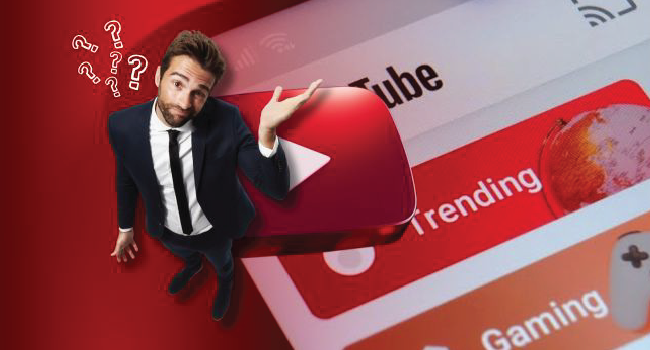The YouTube trending page is gone, and that’s a big change for millions of people who used it every day. For years, this section gave you a single snapshot of what everyone was watching. Now it has disappeared, and many are asking what comes next.

YouTube made the decision in mid-2025, shifting attention toward category-based charts and personalized recommendations. In this article, I’ll walk you through why the page was removed, what replaced it, and how you can still keep up with the hottest videos.
Why YouTube Removed the Trending Page
So, what happened to the trending page on YouTube? In July 2025, YouTube confirmed it would shut it down for good. The company explained that one global list of “what’s hot” no longer fits how people watch today.
Now, you often discover new videos through Shorts, topic-based Explore tabs, or personalized recommendations. Therefore, the old Trending feed felt outdated.
The section also faced criticism. Many creators argued it gave big brands and music labels an unfair advantage, while smaller voices rarely made the cut. As a result, the feed didn’t reflect the real variety of content on YouTube.
By moving away from one universal list, YouTube wants to highlight videos that feel more relevant to you. For creators, this means new opportunities. Instead of chasing a single chart, you can now build momentum inside the categories that truly match your audience.
What Replaced the Trending Page

Now, when the YouTube trending page is gone, YouTube didn’t leave a blank space. Instead, it introduced Charts that focus on categories. Right now, you can see lists for Music Videos, Podcasts, and Movie Trailers. More categories are expected, but the rollout is happening step by step.
If you’ve been wondering how to find the trending page on YouTube, the answer is to use the Explore section or YouTube Music Charts. These give you real-time rankings by interest. For example, gamers can check the Gaming Explore tab, while film fans can look at the top trailers.
In some apps, the old Trending tab has been replaced by a Music tab. Additionally, YouTube’s recommendation system now plays a bigger role.
The videos you see combine what’s trending with recommendations shaped by your watch habits. Together, Charts and personalization create YouTube’s new recipe for discovery.
YouTube Trending Page Is Gone: What It Means for Viewers
With the YouTube trending page gone, you no longer open YouTube and see one universal list of top videos. Instead, your experience now depends on how you use the platform.
For you, that means:
-
More personal feeds. Your recommendations and Shorts shelf highlight videos that match your habits.
-
Category-based browsing. If you enjoy music, gaming, or film, you can dive into Charts that focus only on those areas.
-
Less “watercooler” effect. Without one global list, it’s harder to see what everyone is watching at the same moment.
This change pushes you to explore YouTube in a more intentional way. If you want variety, you’ll need to look at Charts. If you want relevance, your homepage will now deliver it.
Impact on Creators and Brands

Since the YouTube trending page is gone, you no longer need to chase one universal feed. Instead, you can focus on growth strategies that fit today’s system.
Here’s how you can adapt:
-
1. Pick your category wisely. If you create music or gaming content, aim for those niches. Appearing in category-based Charts gets your work in front of people already interested in that field.
-
2. Use Shorts as a launchpad. Short clips grab attention quickly. A 30-second teaser can funnel new viewers into your longer uploads.
-
3 Optimize for recommendations. Strong titles, engaging thumbnails, and solid retention signal tell YouTube to suggest your video more often.
-
4. Leverage Studio tools. Inspiration and Hype (still rolling out) point you toward topics gaining traction. Getting in early can give you a real edge.
This change highlights a bigger industry trend. Think about YouTube vs Vimeo. Vimeo built its reputation around smaller, creative communities instead of a global leaderboard.
YouTube now seems to be leaning in a similar direction, making discovery more about relevance and categories than one “top list” for everyone.
👉 Now, let me share something that can give you a head start. Growing on YouTube is tough when you're starting from zero. That's why we offer a service where you can buy YouTube Subscribers.
These are real accounts, not bots, so your channel looks active and trustworthy. Plus, delivery is fast, giving you a boost when you need it most. Having more subscribers instantly makes your content look credible, which helps attract organic viewers and encourages new people to hit that subscribe button too.
API and Analytics Changes
Now that the YouTube trending page is gone, you’ll see impacts in how API calls return “popular content.”
As of July 21, 2025, YouTube updated the Data API so that videos list chart most popular pulls from category-based Charts like Music, Movies, and Gaming, not a single global Trending feed.
Here are what you can do to adapt:
-
1. Audit your dashboards. Look for API calls using chart=mostPopular. Confirm what categories and region codes they return.
-
2. Use category filters. Add videoCategoryId and regionCode parameters so you only pull the relevant category content.
-
3 Update reporting labels. Change labels from “Trending” to “Most Popular: Music,” “Movies,” or whatever category you use, to avoid confusion.
-
4. Compare old vs. new data. Track how numbers shift before and after the API change to spot unexpected drops or rises.
-
5. Focus on recommendation-driving metrics. Retention, click-through, and first 30 seconds of each video matter more now.
-
6. Watch for regional rollouts. YouTube indicates that some features or Charts may arrive later in some countries. Adjust your tools to handle missing data gracefully.
Conclusion
The YouTube trending page is gone, and with it goes a familiar way of seeing what the whole world is watching. Instead of one universal list, YouTube now guides you through Charts, Explore, and personalized feeds. This makes discovery feel more relevant to your interests while still giving creators the chance to shine in specific categories.
If you’re a viewer, you can follow Charts or lean on recommendations to stay updated. If you’re a creator, you should focus on Shorts, category alignment, and building credibility with your audience. Growth now comes from steady effort, not luck on a single feed.
FAQs | Frequently Asked Questions |
Why did YouTube remove the Trending page instead of just updating it?
YouTube said a single global list no longer reflected how people discover content. They chose to retire it completely and replace it with Charts, rather than trying to modernize the old system.
Can I set notifications for new entries on YouTube Charts?
No, YouTube doesn’t currently offer notifications for Charts. You’ll need to visit the Charts or Explore tabs directly to see the latest updates.
Are third-party websites still able to track what’s trending on YouTube?
Some third-party trackers still collect data for music and viral videos, but they no longer mirror the official Trending feed since that feature has been retired.
Does this change make it harder for small creators to go viral?
It depends. Without a single Trending list, small creators won’t compete with global stars on one feed. However, category-based Charts give niche creators a better chance to stand out in their space.
Will YouTube bring the Trending page back in the future?
There’s no indication that YouTube plans to revive the old Trending page. The platform is investing in Charts, personalization, and Shorts discovery instead.
